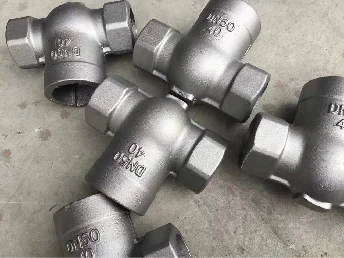The Role of Parting Sand in Foundry Processes
In the world of foundry and metal casting, the importance of various materials and techniques cannot be overstated. Among these, parting sand plays a critical role in ensuring the quality and efficiency of the casting process. Parting sand, primarily made up of silica sand, is used to create a separation between the cope and drag portions of a mold, allowing for the successful removal of the pattern and ultimately, the creation of a cast metal object. This article delves into the significance of parting sand, its properties, and its application in foundry practices.
The Composition and Properties of Parting Sand
Parting sand is typically composed of high-purity, finely graded silica sand, known for its excellent thermal stability and non-sticking properties. The sand's grain size, shape, and distribution are crucial, as these factors determine how effectively the sand can form a barrier between the mold halves. A well-graded sand minimizes the risk of mold erosion and improves the surface finish of the final casting.
One of the primary characteristics of effective parting sand is its ability to withstand high temperatures without degrading, which is essential during the casting process where molten metal can reach extreme heats. Additionally, the sand must be able to resist sticking to both the pattern and the mold itself, allowing for clean separation and reducing the risk of defects in the cast product.
Functions of Parting Sand in Foundry Processes
The primary function of parting sand is to facilitate the easy removal of patterns from molds. Without an adequate parting agent, patterns can become stuck within the mold, leading to damage to both the pattern and the mold itself, and potentially ruining the casting. By applying parting sand, foundry workers can ensure there is a smooth separation process, maintaining the integrity of all components involved.
parting sand in foundry

Moreover, parting sand helps improve the surface finish of the casting. When the sand is properly applied, it creates a smooth interface, reducing the likelihood of defects such as rust or surface blemishes. This is particularly important for industries where surface quality is paramount, such as automotive and aerospace manufacturing.
Additionally, parting sand serves a role in controlling the temperature within the mold. By providing an insulating layer, it can help to regulate the cooling of the molten metal, which can be pivotal in preventing defects like hot tears or uneven shrinkage.
Application of Parting Sand
The application of parting sand is a straightforward process but requires precision and skill. Foundry workers typically dust the sand onto the pattern and into the mold cavity before placing the cope and drag sections together. It is essential to ensure an even distribution to prevent any areas of sticking during the casting process.
In modern foundries, some manufacturers have begun to experiment with synthetic parting agents, which can offer benefits like improved non-stick properties and reduced dusting. However, traditional parting sand remains widely used due to its affordability, accessibility, and proven effectiveness.
Conclusion
In summary, parting sand is a fundamental component in the foundry industry, serving multiple critical functions that impact the quality of metal castings. From ensuring the smooth separation of patterns from molds to enhancing the surface finish of the cast products, the role of parting sand is invaluable. As technology continues to advance, the methods and materials used in foundries may evolve, but the underlying principles that emphasize the significance of parting sand will remain entrenched in best practices for casting excellence. Understanding and optimizing the use of this essential material will continue to be a focus for foundry professionals aiming to achieve superior results in metal casting.
Post time:ऑक्टोबर . 15, 2024 01:33
Next:мисолҳои парокандаи гум шудаанд
